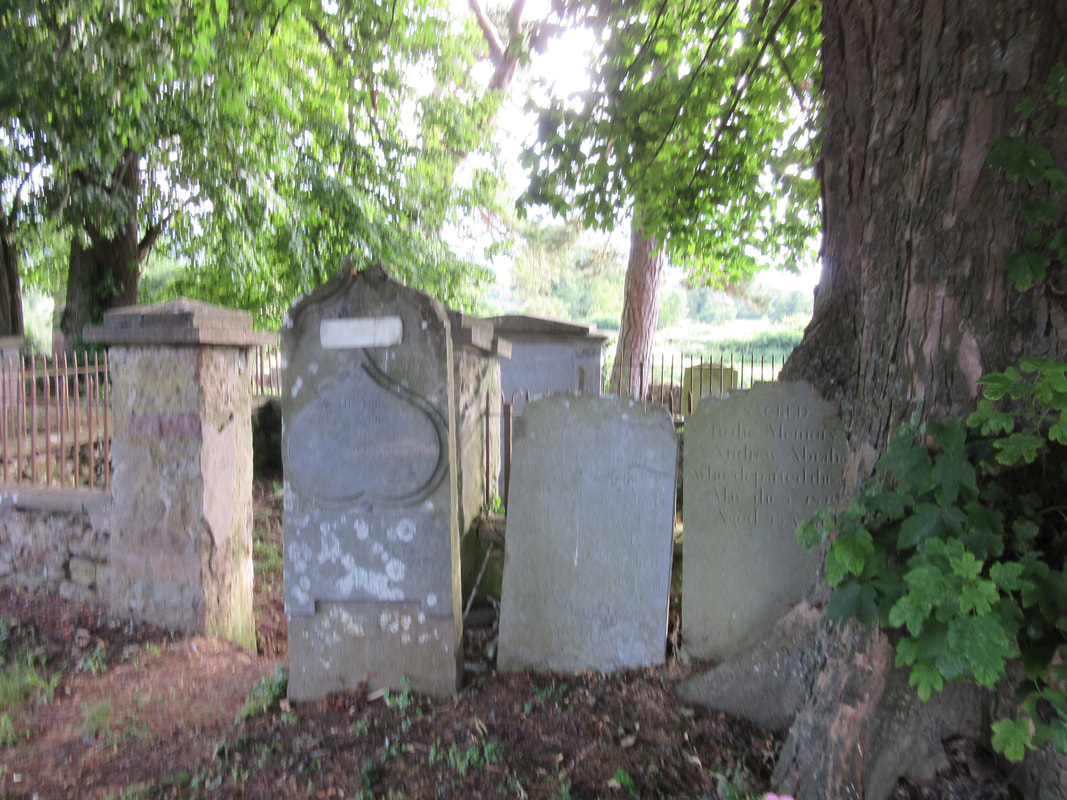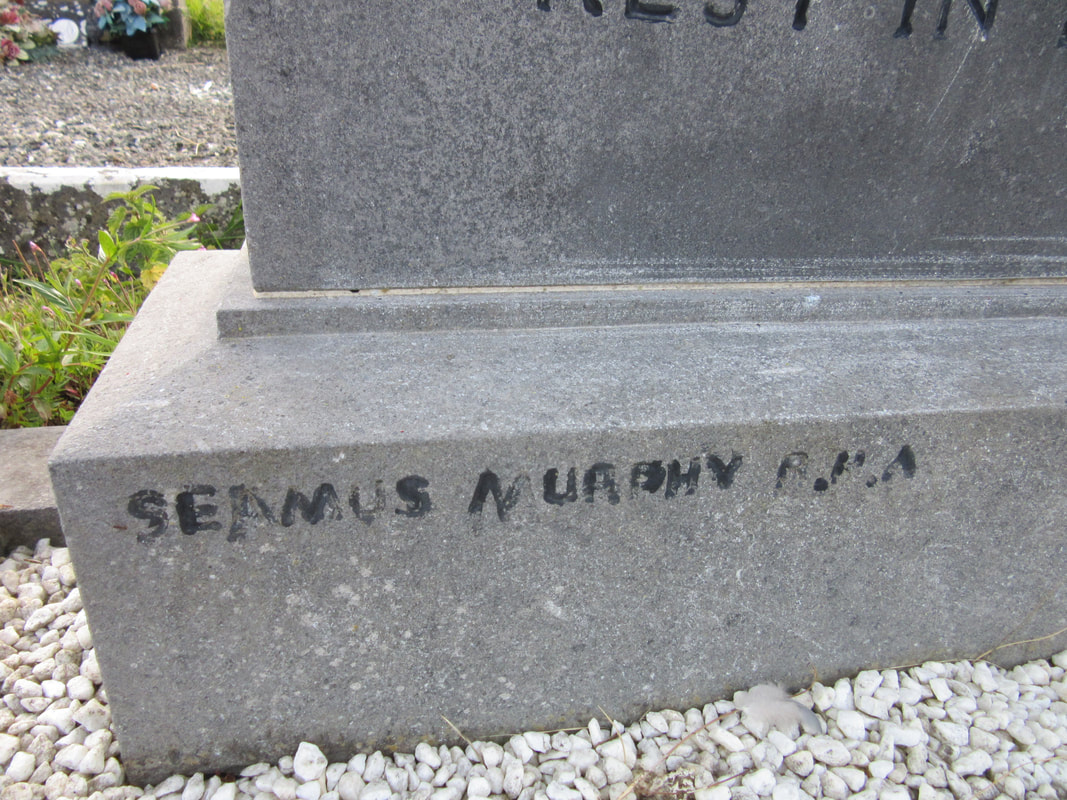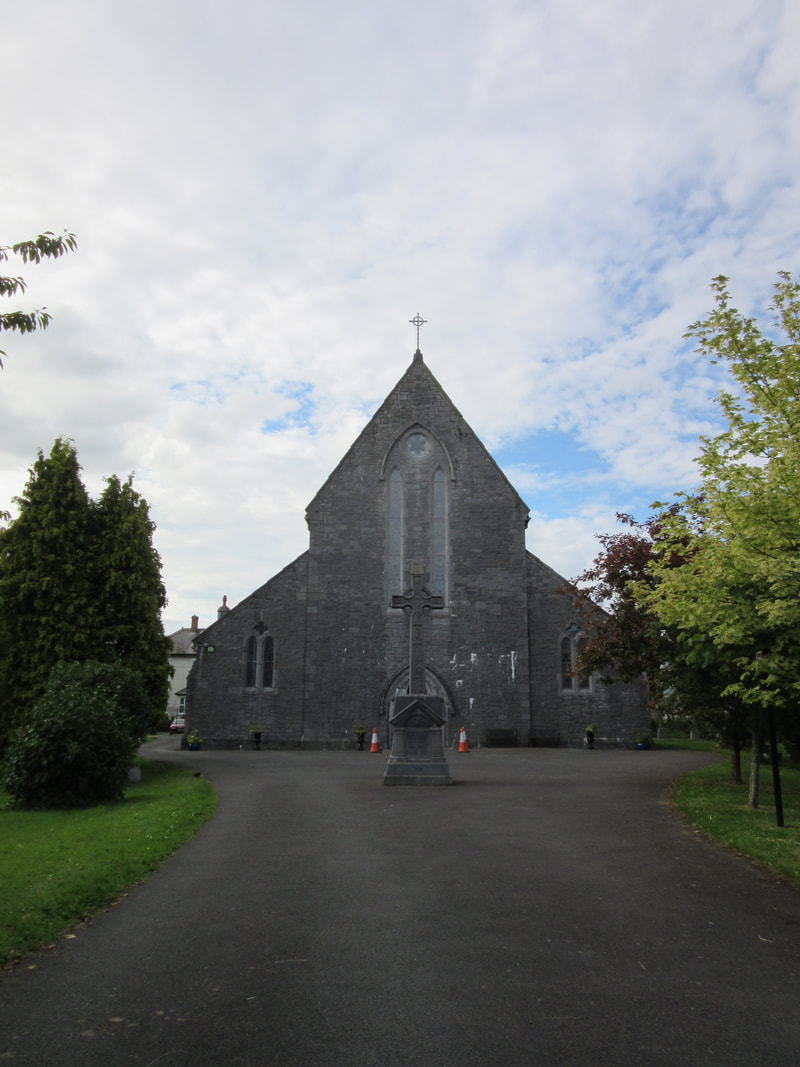Shanrahan Cemetery – Part 5
| According to P.J. and his lady wife, whose evening stroll I interrupted, when in Shanrahan Cemetery last week, this small section was a Cillín, where unbaptised babies were buried. I remember first learning of a Killeen or Cillín or Ceallúrach over 30 years ago in a book by Mary Leland, which I have just borrowed from the library to relive that moment of amazement.
The amazement at the existence of such burial grounds was heightened by the fact that, to my knowledge, I had never seen a Cillín. This continued for many years, until 2014 when I spotted the above plaques in Cromane and Killorglin in Co. Kerry. Subsequently, I noted a plaque at Ballygarvan in Co. Cork and have spotted mention to some Cillín’s that have gone on my To Visit map It appears that it has taken many years for Ireland to be no longer ashamed of Cillín, possibly facilitated and assisted by the passing of time since 1994 when the Catholic Church lifted the prohibition on unbaptised being buried in consecrated ground – only 26 years ago. The Schools Collection of the National Folklore Collection has many references to ‘Cillín’ and ‘Killeen’ which hopefully I will study in the coming weeks. The Irish Examiner noted in 2014 of some Cillíní being brought back and recognised by the community. It is reported that there are 1,444 Cillíní on the island of Ireland – my expectation would have been a significantly greater number. If you are aware of any plaque or memorial erected at a Cillín, I would be delighted to receive any details as to where, when, by whom – please use the Contact page | “As the lane curves around towards the graveyard there is a small patch of ground on which lumps of rough-hewn stone are scattered. They are small, each less than the size of a football. There is a sign that reads: ‘Don’t pray for us/ no sins we knew / But for our parents/ they’ll pray for you. ‘A lady was found drowned, it seems, on the Island Strand at the time when Santa Maria de la Rosa floundered. According to old stories about her she was a wealthy woman; she wore many rings and bracelets of gold and was buried at Castle Point where the graveyard is today. She was not buried, strange to say, in the graveyard proper but outside it. Years ago an old man showed me the spot.’ ‘The weeping and the wailing grew loud again as the coffin was lifted on to the shoulders of four men, carried out of the house and down the steep and slippery path that led to the island harbour. On the way they passed the tiny graveyard at Castle Point, which was used for children who had died before they were baptized. The adults buried there were unidentified shipwreck victims, soldiers, suicides, and a few souls whose funerals had been confined to the island by storm.’ |































